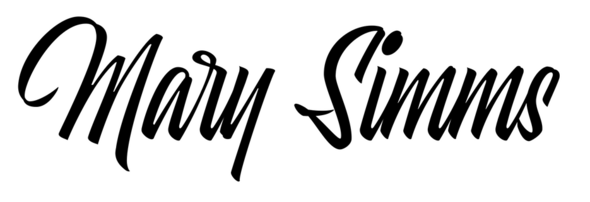Understand How To Effectively Use Publicity To Attract Your Ideal Clients

Did you go into business as an entrepreneur to create your own schedule, give back in a meaningful way—to truly help others with your unique offerings and skills?
One of the most important reasons for business owners to focus their attention on effective PR and communications is that it positions their expertise and helps to attract ideal clients, and expand their influence through thought-leadership to share their important messages with more people.
Effective PR can be a game-changer for your business, putting you in a position to say “no” to clients who you deem aren't ideal.
Sam Ovens, recently profiled in Forbes 30 under 30 list, understands what it’s like to have so much business, you have to say no. Ovens has helped thousands of entrepreneurs through innovative thought leadership and smartly advises that “when it comes to being in business, good PR is no substitute for actually being the best.” I couldn’t agree more. Ovens leads a mastermind and recently acquired Consulting.com, which helps everyday people start and grow their online consulting business.
Because of the empire he’s scaled, Sam has a community of raving fans he enjoys working with, who he helps daily. Helping his ideal clients lights him up, and it’s placed him in a unique position to politely say no to everyone else.
Here’s a lighter look at the 17 client profiles you might want to try and avoid, as told by top attorneys, entrepreneurs and experts in their field who have learned to use PR to attract their dream clients and say no to everyone else.
#1. The Co-Dependent Client.
“This client can’t make a move without checking in with you and getting approval. When you’re hired as a coach or consultant, your job is to share your expertise and guide your client, not to be their ‘savior.’ However, clients like these can barely think for themselves and don’t trust their own intuition when making decisions.”
#2. Last Minute Larry.
“This client contacts you with an urgent need—but always at the last minute. They need your advice now. They assure you they only need ‘quick’ advice . . . probably because they don’t want to pay what a complete answer might cost. To answer their urgent requests, you’ll have to rush, which may cause you to overlook or omit something. Plus, Larry's last minute demands distract you from what you were hoping or planning to do, like taking care of clients more respectful of your time and needs.”
#3. The Freeloader.
“This is the client who wants to get your product or services for free. Their Modus Operandi is to avail your product/services and then ask for a return. These clients are not easy to spot.”
#4. The High-Maintenance Client.

“This is the client who requires much more attention than anyone else you work with, usually because they have a hard time sticking to your advice and you have to spend time fixing their mistakes. I've worked with a number of professional athletes as their financial adviser or business manager and have been fortunate to have some really great clients. However, some of my clients have required so much time and ended up creating so much frustration for me and my team that the business relationship ended up not being worth all of the hassle.“
#5. The Money-Story Maven.
“We all have a money story that we grew up with—'Money doesn't grow on trees' or 'I'm not made of money', etc—and it was probably set in our minds before we were even six years old. So the Money-Story Maven is the client who refuses to invest in their business growth because a six-year-old is still calling the shots!”
#6. The Intellectual Property Thief.
“It’s always fascinating: some clients will use the intellectual property protection my law firm obtains for them to brand, market, protect and grow successful businesses. Then these same clients justify—to minute levels of detail—why such intellectual property is not really valuable to them and why they cannot (or will not) pay all the legal fees associated with obtaining the intellectual property protection they’re using to make money. Sometimes I think these clients have decided to live by the Bill Gates quote, ‘Intellectual property has the shelf life of a banana’ as a justification for their behavior.”
#7. The Chaotic Client.

“This is the client that's completely disorganized. It's the client that's always late. They never come through, they fail to meet deadlines, and they never seem to be on the ball. With this kind of client, it's pretty much a guarantee that a project is not going to run smoothly.”
#8. The Invisible (or Disappearing) Client.
“When I get a prospective or soon-to-be client that I have trouble reaching by phone, who does not reply to (or ignores) emails, or who is constantly leaving the country—my red flag goes up! Especially at the beginning of an account. Those first few interactions and approvals are key to setting the standard of work, and the language which will represent them fully and accurately.”
Amanda Sutton: CEO of boutique Public Relations firm out of Ontario Canada, Catalyst communications choreography
#9. Doctor Do Little.
“This client is a startup founder who wants all the benefits of a tech startup but doesn’t want to put the time and energy that really needs to be done into the business. They have the capital to begin, so you take the assignment. You end up doing all of their research, P&Ls, the Business Plan, Pitch Deck and Executive Summary for the founder. When it’s time to pitch the startup to investors, they ask you to do the pitch for them. Well, my job ends right there. And you’ll find they don't pay their final invoice.”
#10. The Unemotional Analyst.
“This prospective buyer only cares about the numbers, and shows no emotion or passion for your business. While economics are important, they’re definitely not the only thing an investor should consider when buying a franchise—or any business. Our number one criteria is that buyers show passion and energy for health and wellness, and for our brand as a whole.”
#11. The Difficult Client.
“A client with a noticeably hot temper or rude demeanor, or someone who promises to be difficult based on their dissatisfaction with other professionals. If a client tells you they fired their previous attorney(s) or that their attorney withdrew from the case, this should be a red flag—maybe they are difficult to please, or have unrealistic expectations. If you are in a position to say no, follow your instinct, decline service and save yourself potential headache later. If they don't treat you with respect and kindness from the start, chances are they’ll treat you with less if they are remotely dissatisfied, impatient, or anxious about progress.”
#12. The Jekyll and Hyde.

“Some clients are all for the work you do one day, then make you feel like they’re wasting their money, and your time, the next. They’re completely supportive of your campaign ideas and give you the go ahead, but then can’t decide on what budget to commit to. They insist all your work must adhere to their brand’s tone of voice, but provide no guidelines to help you. They say they’ll give you complete control over some aspect of their marketing, and then insist on taking it back once you’ve started on something big. You get tons of praise for a successful campaign, but you’re still chasing them for payment six months later.”
#13. The Scope Creeper.
“In my freelance writing business, the project is fully laid out in a Statement of Work listing everything to be done under contract. This type of client is constantly changing the scope of the project by adding or modifying deliverables. We're contracted for a short book, but when we get into it, the client wants to add an appendix, maybe another chapter, and then suddenly wants 20 interviews of family members, none of which are in the contract. They don't want to pay more for these additional services, and it can cut my hourly rate in half or worse. I've realized I do top-quality work and always deliver what's promised, on time and, if there is no scope creep, within budget. Good clients understand this and are willing to pay for services they request.”
#14. The Narcissist.
“As a psychologist, I work with all types of clients. By far one of the most frustrating is the narcissist. The narcissist is usually meeting you because their employer is threatening termination or their spouse is threatening divorce. They believe everything is everyone else's fault. When you try to show them their contribution to the issue, they deflect by changing topics or pointing out the other person’s deficit. Narcissists are notoriously self-absorbed, highly defensive, and have a profound lack of insight and concern for their impact on others.”
#15. The Ungrateful Client.
“I simply won't negotiate with ungratefulness. As an entrepreneur you work extremely hard to build your business, develop your service or product and do the very best you can for others. I believe if you truly put your heart and soul into the project, making sure your client is happy, they should say thank you. It’s imperative for entrepreneurs to work with clients who are appreciative of their work. Be thankful your client hired you, and in return the client should be thankful for your help. If I feel a client is going to be unappreciative or disrespectful I instantly say, ‘No.’”
What’s the client profile you tend to avoid most? For many, it’s the dreaded discount diva but I actually like these savvy shoppers.
#17. The Discount Diva.
This one can apply to men or women. When it comes to my own clients, because of the value I provide, I‘m not generally in a situation where I'm racing to the bottom with discounts. Over the past thirteen years I've worked my butt off to create relationships, increase my expertise, and innovate PR campaigns that have generated millions of dollars in advertising equivalency value and sales for the clients and agencies I’ve represented. Understanding how to turn uncover and package everyday stories into front page headlines has helped to drive more than a billion impressions to digital clips of campaigns I've created. Those results, and great PR have allowed me the opportunity to be selective with one-on-one clients and brands I represent.
In my work I often encounter savvy small business owners who want PR but aren’t sure where to begin. For most of them, it isn’t financially suitable to spend thousands a month on a PR retainer, but with a little help they could overcome their fears and gain media mentions. It’s why I launched the PR Influencer Academy. Publicity has made me visible to so many of my ideal discount diva clients, I wanted a way to help them and provide the type of PR and expertise that usually comes along with six-figure consulting.
Do you want to go on television, knock out radio and newspaper interviews, and share valuable information on podcasts to share value and expertise, propel your meaningful message to a broader audience? Sharing your knowledge and helping others for free in the media is not only good karma—it’s good for business. So, instead of taking on those problem children, the clients that make you pull your hair out and waste hours talking to your significant other and anyone who will listen about how horrible they are, focus on attracting your ideal clients. PR can put you in a position where you can't grow your company quickly enough to keep up with the demand from your ideal clients. That’s a problem you want to have.
What would more media attention mean for your business? I’d love you to weight in, in the comments below. Do you desire more clients? Increase visibility? To be seen as an authority or expert? To position yourself in a particular niche? To introduce your message to a new audience?

Whatever your goals - when you own your story, you own your power.
When you amplify your voice, you ignite endless possibilities in your work, your community, and beyond.
And isn’t that what we truly want? To make a difference. To have an impact. To be of service to our clients and our purpose.
Want media mentions for your own business or maybe even for a client? I'm sharing some of my best strategies and advice in my brand new 5 Days to Media Mentions PR Course. We start on Monday so reserve your spot today (it's free).
From the Misinformed Know-It-All, to the Negative Nancy, I received more than 80 less-than- ideal client profile pitches from entrepreneurs excited to weigh in on this topic. What’s your ideal and “avoid-at-all costs” client profile?
Until next time,
Be Disruptive.
Leverage Your Voice.
Shape the Conversation.
Xo,
Mary

Follow the Mary Simms Public Relations Agency on Facebook or YouTube.
Connect with @marysimms on Facebook, Instagram, LinkedIn and Twitter. Read more @HuffPost articles from Mary Simms here.
Join Mary’s #PR Influencers Facebook Group, designed for business owners, authors, thought-leaders, influencers, podcast hosts, PR types, journalists who want to increase their impact and learn the PR strategies working right now to effectively share their message with a broader audience.
